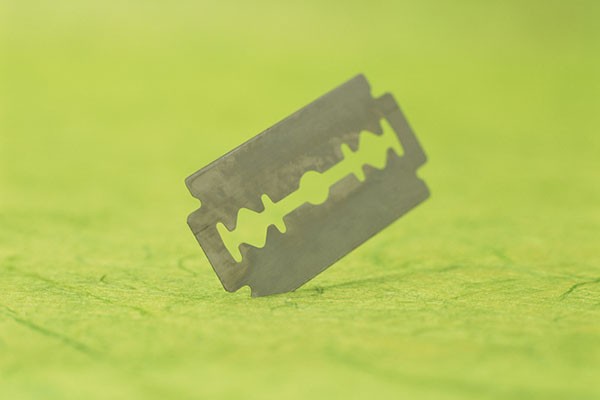Self-harm, often in the form of cutting, is a disturbing but unfortunately common behavior among teenagers. Understanding the reasons behind this behavior is crucial for parents, educators, and anyone who interacts with adolescents. This article explores the motivations for self-harm, the warning signs, and how to help a teen who may be cutting.
 close-up photo of a razor blade with one corner stuck into a green painted surface
close-up photo of a razor blade with one corner stuck into a green painted surface
Self-harm can be a difficult topic to discuss, but understanding why teenagers cut themselves is the first step towards providing support and guidance.
Understanding the Urge to Self-Harm
While it seems counterintuitive, cutting and other forms of self-injury can provide temporary relief from intense emotional pain. According to Dr. Matthew Nock, chair of the psychology department at Harvard University, self-harm is defined as the intentional destruction of body tissue without suicidal intent. It often involves cutting with sharp objects like razor blades or knives, burning, or inserting objects under the skin.
Prevalence of Cutting in Teens
The American Psychological Association estimates that approximately 17% of teenagers engage in self-harm at least once. This behavior often begins between the ages of 12 and 14, a period marked by hormonal changes, increased risk-taking, and the potential onset of mental health disorders.
Root Causes of Self-Harm in Adolescents
Several factors contribute to a teenager’s decision to self-harm.
Psychological Factors
Teenagers who struggle with emotional regulation, particularly those experiencing depression, anxiety, or other mental health issues, may resort to cutting as a way to cope with overwhelming feelings. The physical pain provides a distraction from emotional distress and can offer a temporary sense of control.
Biological Factors
Research suggests a biological component to self-harm. Some individuals may have a lower tolerance for emotional pain or a heightened sensitivity to physical sensations, making cutting a more appealing coping mechanism.
Social Factors
External pressures, such as family conflicts, academic challenges, bullying, and relationship problems, can also contribute to self-harm. A 2022 study in Child and Adolescent Mental Health highlighted these social factors as significant contributors to self-injurious behavior.
Feeling overwhelmed and alone can contribute to self-harming behaviors in teenagers.
The Cycle of Self-Harm
The temporary relief experienced after cutting reinforces the behavior, creating a vicious cycle. Similar to how an adult might use unhealthy coping mechanisms like excessive drinking or overeating to alleviate stress, a teenager who finds temporary solace in cutting is likely to repeat the behavior.
Talking to Teens About Cutting
Many parents hesitate to discuss self-harm with their children, fearing they might plant the idea. However, experts assure that open communication is crucial. Teenagers are often aware of self-harm through social media and peer interactions. Asking about cutting will not trigger the behavior but can create an opportunity for dialogue and support.
Recognizing the Warning Signs
While teens who self-harm often try to hide their behavior, there are warning signs parents and caregivers can look for:
- Unexplained cuts, burns, or scars: Fresh injuries or evidence of healed wounds on the arms, legs, or other areas of the body.
- Changes in clothing: A sudden shift to long sleeves or pants, even in warm weather, to conceal injuries.
- Withdrawal and isolation: Spending more time alone and avoiding social interactions.
- Increased irritability and mood swings: Sudden changes in behavior and emotional outbursts.
The Link Between Cutting and Suicide
While cutting is not typically a suicidal act, it can indicate a higher risk of future suicide attempts. The willingness to inflict physical pain suggests a vulnerability that requires attention and professional help.
Reaching out and offering support is essential for teenagers struggling with self-harm.
How to Help a Teenager Who is Cutting
If you suspect a teenager is cutting, it’s crucial to offer support and guidance:
- Open communication: Create a safe and non-judgmental space for the teenager to share their feelings.
- Seek professional help: Consult a primary care physician, psychiatrist, psychologist, or social worker for evaluation and treatment.
- Therapy: Cognitive Behavioral Therapy (CBT) and Dialectical Behavior Therapy (DBT) are effective in teaching healthy coping mechanisms.
- Emergency intervention: If the self-harm is severe or there are concerns about suicide, seek immediate medical attention at a hospital emergency room.
Addressing self-harm requires a compassionate and proactive approach. By understanding the underlying causes and recognizing the warning signs, we can help teenagers develop healthier coping strategies and find a path towards healing.